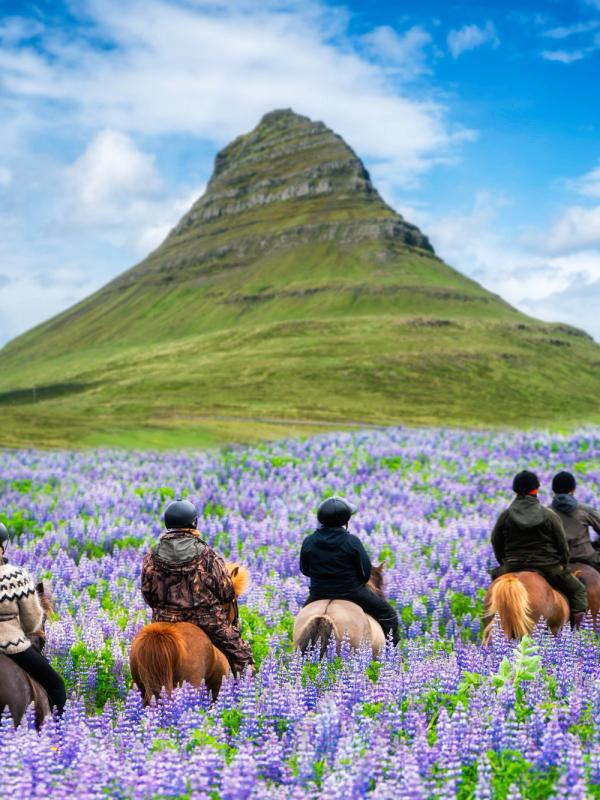
Eco-Friendly Travel in Iceland: Tips for a Greener Adventure
Iceland is one of the few countries in the world that has come close to a fully sustainable society. It’s one of the least polluted countries and generates about 85% of its energy from renewable sources. As far as sustainable destinations go, Iceland is up there with the best. But in the past decade, travel emerging as the biggest sector in the Icelandic economy has started to have a big impact on the environment. Iceland’s natural wonders are fragile, and as travelers, we need to do our best to lower our footprint and protect the country for generations to come. Luckily, it’s a lot easier than you think. Here are 10 tips on how to be an eco-friendly traveler in Iceland.
1. Bring a Reusable Water Bottle
One of the easiest ways to lower your carbon footprint in Iceland is to bring your own reusable water bottle. Iceland is the land of fire and ice – and where there’s ice, there’s water. Iceland’s drinking supply is some of the cleanest in the world, thanks to low pollution levels and the water filtering naturally through layers of volcanic rock. You can even fill your bottle up from the rushing rivers, fed by the melting snow and ice. But the best part is not buying your water in plastic bottles, 80% of which end up in a landfill or the ocean.
Iceland’s official tourism body recently launched the Kranavatn campaign to remind travellers to make the most of the country’s pristine water.
2. Stick to the Paths
Paths and fences are there for a reason – especially in Iceland. In such a fragile environment, a stray step onto some moss can sometimes cause irreparable damage. So, it’s important when you’re out exploring the countryside to always stick to the trails. Part of the attraction of Iceland is that it puts you smack bang in the middle of the incredible natural wonders. But as tourism grows, it’s that environment that’s in danger. All it takes is one set of footprints going somewhere they shouldn’t for others to follow. Remember to always stick to the trails, respect any rules, and stay behind the fences. It’s also very often for your own safety as well.
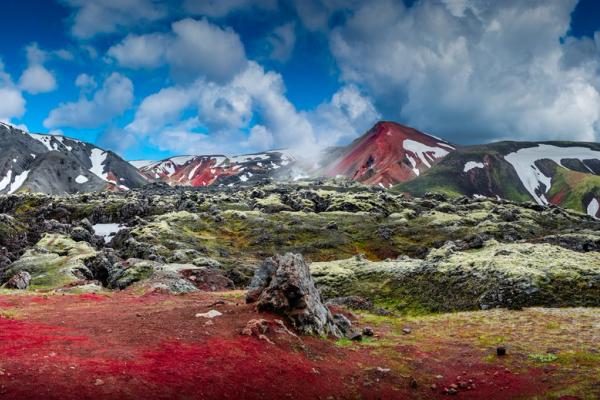
3. Try to Limit Your Stopover Flights
The biggest expense carbon-wise when travelling is of course your flight. An easy way to lower your carbon footprint is to try and book a direct flight to and from Iceland; landing and taking off is when planes use the most fuel. Luckily, that’s quite easy from Europe and North America, with Iceland positioned about halfway in between the two continents. Most airlines now also have options to offset the carbon used by flying. It costs extra but also takes care of the highest environmental cost of traveling. Icelandair’s carbon offset program helps plant trees in the countryside with help from the Icelandic Carbon Fund, Kolviður.
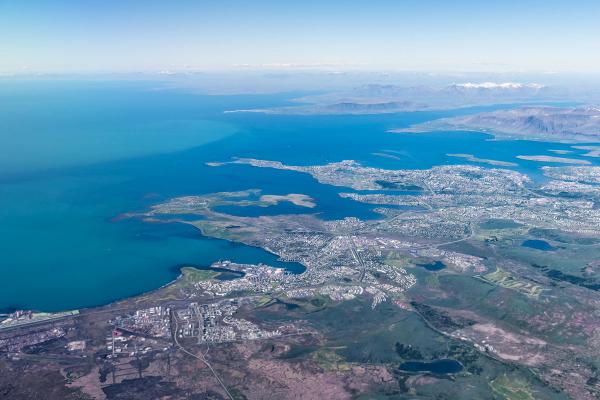
4. Don’t Eat Whales or Puffin
Many tourists fall into the trap of eating whales and puffins, thinking that they’re experiencing local Icelandic culture. However, Iceland only began hunting whales in the 1930s, and a very small number of locals eat the meat. Tourism leads the demand for whale meat on restaurant menus, and whaling has been one of the biggest issues discussed in Iceland recently. Despite the whale quote being sustainable, many Icelanders rely on whales for their day jobs.
As for puffins, the practice of hunting them is also sustainable. However, the quirky animal is on the list of vulnerable species in Iceland. This is thanks to a decline in their main food source, which has led to fewer and fewer numbers coming to Iceland. As the last remaining destination where they breed in such great numbers, to be an eco-friendly traveler in Iceland, we recommend observing them rather than eating them. Large numbers of puffins disappeared from North America and Great Britain due to tourists eating their meat.
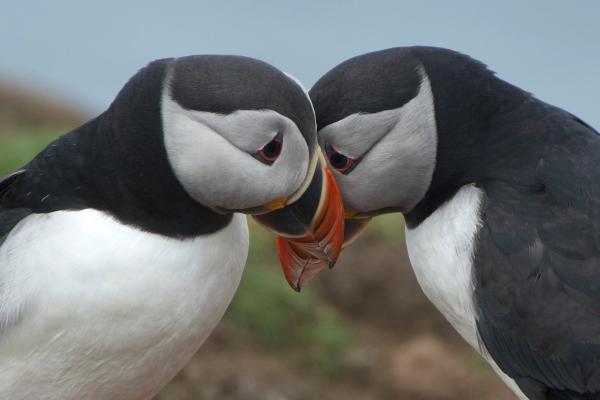
5. Buy Some Reusable Shopping Bags
Since you’re going to be eating out of your campervan, that means you’re going to be shopping at grocery stores around the country. If you can, try to bring your own reusable shopping bags from home to save on buying the plastic ones at the supermarket. If you don’t have the room, you can also buy reusable shopping bags at the checkouts. Pick some up at the beginning of your trip, and when you’re done, leave them in the Go Campers sharing centre. Or take them home as a souvenir – Bonus’ pink pig logo is a favorite amongst tourists and will be sure to bring back good memories of your camper trip in Iceland.
6. Drink Local Beers
Iceland’s beer is fantastic. Banned in the country until the 1st of March 1989, Iceland had a lot of catching up to do when it became a legal drink. Nowadays, there are plenty of local options for a tasty beer, and more and more craft breweries are popping up around the country. Drinking locally brewed beers is another (delicious and fun) way to help lower your carbon footprint in Iceland. If you’re drinking local, you’ve effectively cut down the mileage of your drink. Avoid international imported beers and you’re helping the environment. Not such a hard sacrifice to make when Icelandic beer is so good.
7. Eat Locally Sourced Foods
Another way to be environmentally friendly in Iceland is to eat locally sourced foods. Again, it’s about lowering the mileage of what you consume. Iceland has plenty of beef, lamb, fish, and dairy, all of which are sustainable industries thanks to heavy regulation. Free-range lamb is especially popular and one of the main dishes you’ll find in restaurants alongside fresh fish. And thanks to all that geothermal power, the country also grows its own produce. When in the supermarket, look out for Icelandic tomatoes, cucumber, peppers, lettuce, potatoes, and more. All of this is grown in greenhouses around the country. There are even Icelandic bananas!
8. Shop Icelandic-made Products
Of course, another way to be an eco-friendly traveler in Iceland is to shop the local products. You’re going to want to take home some souvenirs from your campervan trip in Iceland, and authentic is always better than mass-produced. Where you can, make sure you’re buying Icelandic-made souvenirs. An easy way to do so is to hunt out the small, local design stores in Reykjavik. One of the most popular souvenirs for visitors is a lopapeysa, the woolly Icelandic sweater. To make sure you’re buying a handmade jumper and your money is going towards locals, we recommend paying a visit to the Handknitting Association of Iceland.
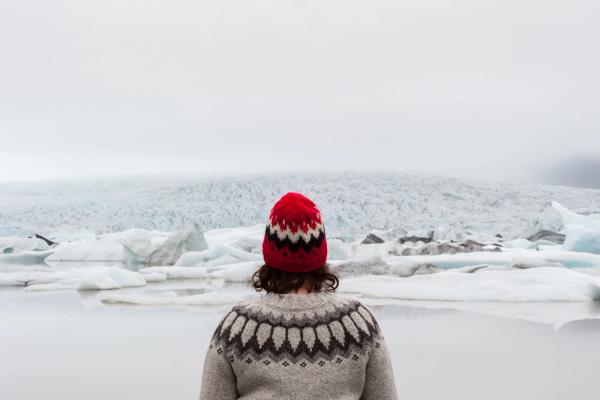
9. Join Eco-Friendly Tours
There are many amazing tours around Iceland to partake in and experience the wilderness. However, some that are eco-friendlier than others. Snowmobiling and super jeep tours on a glacier are very awesome, but if you’re trying to be more environmentally friendly it’s probably best to forego those tours for something else. Instead, opt for hiking across the glacier. Instead of helicopter tours, go paragliding. White-water rafting is available, as are kayaking tours, zip-lining, and eco-friendly boat tours as well. Bonus points if the tour company also has an environmentally friendly ethos.
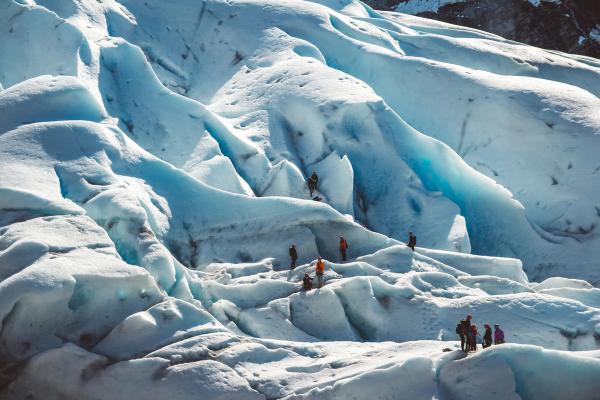
10. Offset Your Travel with Go Campers
Lastly, we at Go Campers are proud to partner with the Icelandic Carbon Fund as well. As a company, one of our main priorities has always been to reduce waste and our CO2 emissions. If you like, you can opt to donate 1-2 EUR per day (depending on your campervan model) to the fund to help offset all the miles you’ll be covering across the country. And who knows, maybe by the time you come back, Iceland’s trees will have returned!
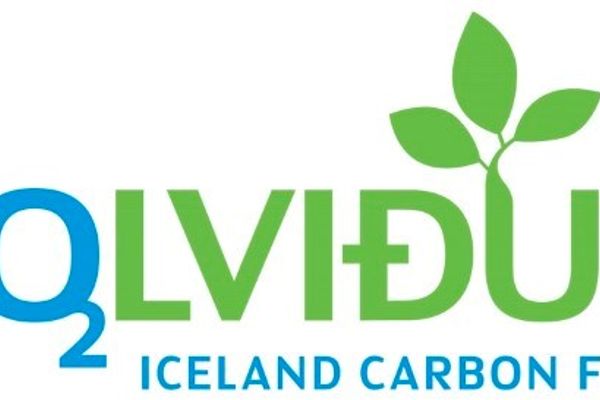
Conclusion
Traveling in a way that’s better for the environment doesn’t have to be complicated. Simple things like using a reusable water bottle, following the trails, eating local food, and picking eco-friendly tours can help keep Iceland’s nature as it is. The country’s landscapes are a big part of what makes it special, and being mindful of how you explore them makes a difference. With a few easy choices, you can enjoy your trip while helping to protect Iceland for the future.
